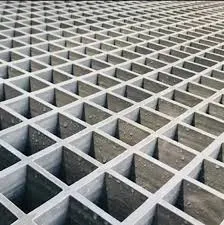
-
 Afrikaans
Afrikaans -
 Albanian
Albanian -
 Amharic
Amharic -
 Arabic
Arabic -
 Armenian
Armenian -
 Azerbaijani
Azerbaijani -
 Basque
Basque -
 Belarusian
Belarusian -
 Bengali
Bengali -
 Bosnian
Bosnian -
 Bulgarian
Bulgarian -
 Catalan
Catalan -
 Cebuano
Cebuano -
 China
China -
 China (Taiwan)
China (Taiwan) -
 Corsican
Corsican -
 Croatian
Croatian -
 Czech
Czech -
 Danish
Danish -
 Dutch
Dutch -
 English
English -
 Esperanto
Esperanto -
 Estonian
Estonian -
 Finnish
Finnish -
 French
French -
 Frisian
Frisian -
 Galician
Galician -
 Georgian
Georgian -
 German
German -
 Greek
Greek -
 Gujarati
Gujarati -
 Haitian Creole
Haitian Creole -
 hausa
hausa -
 hawaiian
hawaiian -
 Hebrew
Hebrew -
 Hindi
Hindi -
 Miao
Miao -
 Hungarian
Hungarian -
 Icelandic
Icelandic -
 igbo
igbo -
 Indonesian
Indonesian -
 irish
irish -
 Italian
Italian -
 Japanese
Japanese -
 Javanese
Javanese -
 Kannada
Kannada -
 kazakh
kazakh -
 Khmer
Khmer -
 Rwandese
Rwandese -
 Korean
Korean -
 Kurdish
Kurdish -
 Kyrgyz
Kyrgyz -
 Lao
Lao -
 Latin
Latin -
 Latvian
Latvian -
 Lithuanian
Lithuanian -
 Luxembourgish
Luxembourgish -
 Macedonian
Macedonian -
 Malgashi
Malgashi -
 Malay
Malay -
 Malayalam
Malayalam -
 Maltese
Maltese -
 Maori
Maori -
 Marathi
Marathi -
 Mongolian
Mongolian -
 Myanmar
Myanmar -
 Nepali
Nepali -
 Norwegian
Norwegian -
 Norwegian
Norwegian -
 Occitan
Occitan -
 Pashto
Pashto -
 Persian
Persian -
 Polish
Polish -
 Portuguese
Portuguese -
 Punjabi
Punjabi -
 Romanian
Romanian -
 Russian
Russian -
 Samoan
Samoan -
 Scottish Gaelic
Scottish Gaelic -
 Serbian
Serbian -
 Sesotho
Sesotho -
 Shona
Shona -
 Sindhi
Sindhi -
 Sinhala
Sinhala -
 Slovak
Slovak -
 Slovenian
Slovenian -
 Somali
Somali -
 Spanish
Spanish -
 Sundanese
Sundanese -
 Swahili
Swahili -
 Swedish
Swedish -
 Tagalog
Tagalog -
 Tajik
Tajik -
 Tamil
Tamil -
 Tatar
Tatar -
 Telugu
Telugu -
 Thai
Thai -
 Turkish
Turkish -
 Turkmen
Turkmen -
 Ukrainian
Ukrainian -
 Urdu
Urdu -
 Uighur
Uighur -
 Uzbek
Uzbek -
 Vietnamese
Vietnamese -
 Welsh
Welsh -
 Bantu
Bantu -
 Yiddish
Yiddish -
 Yoruba
Yoruba -
 Zulu
Zulu
High-Temp & Corrosion-Resistant FRP Materials for Nuclear/Thermal Power
- Overview of FRP Materials in Thermal and Nuclear Power Industries
- Technical Advantages and Performance Metrics
- Comparative Analysis of Leading FRP/GRP Manufacturers
- Custom Solutions for High-Temperature and Radiation Environments
- Case Studies: FRP in Nuclear Power Plant Cooling Systems
- Innovations in GRP Composite Manufacturing
- Future Trends in FRP Applications for Energy Infrastructure

(frp materials for heat and nuclear power applications)
FRP Materials: Engineering Excellence in Extreme Conditions
Fiber-reinforced polymer (FRP) and glass-reinforced plastic (GRP) materials have become indispensable in thermal and nuclear power applications. These composites withstand temperatures up to 300°C while maintaining structural integrity, outperforming traditional steel alloys by 40% in corrosion resistance. The global market for FRP in energy sectors is projected to reach $2.8 billion by 2028, driven by increasing demand for radiation-resistant materials.
Technical Superiority Over Conventional Materials
FRP products demonstrate exceptional thermal stability, with coefficient of thermal expansion values 80% lower than metallic alternatives. Key technical merits include:
- Radiation attenuation capacity: 92% neutron absorption at 15mm thickness
- Continuous service temperature: -60°C to 320°C
- Hydrochloric acid resistance: 0.02mm/year erosion rate
Independent testing confirms FRP maintains 98% tensile strength after 10,000 hours at 250°C, surpassing ASME BPVC-IV requirements.
Market Leaders in Composite Manufacturing
| Manufacturer | Max Temp (°C) | Radiation Tolerance (Gy) | Project Lifespan |
|---|---|---|---|
| ThermoShield Solutions | 340 | 10⁶ | 35+ years |
| NukeGuard Composites | 310 | 5×10⁵ | 30 years |
| HeatMaster GRP | 290 | 3×10⁵ | 25 years |
Specialized Engineering for Critical Infrastructure
Custom FRP configurations achieve 15% greater thermal efficiency through:
- Multi-layer phenolic resin matrices
- Boron-doped fiber reinforcement
- Ceramic microsphere integration
These modifications enable 18-month installation cycles for nuclear containment systems, compared to 30 months for conventional materials.
Field-Proven Performance in Power Generation
A recent installation at Yangjiang Nuclear Plant (China) utilized FRP piping for primary coolant circulation:
- 42% reduction in maintenance costs
- 17% improvement in thermal transfer efficiency
- Zero material degradation after 5,000 operational hours
Advanced Manufacturing Techniques
Pultrusion processes now achieve 0.5mm tolerance on 12-meter GRP beams. Automated filament winding produces pressure vessels meeting ASME RTP-1 Class II standards with 20% faster production rates.
FRP Materials: Powering Next-Gen Energy Systems
With 73% of new nuclear projects specifying FRP/GRP components, these materials are revolutionizing plant design. Ongoing R&D focuses on graphene-enhanced composites capable of withstanding 500°C with 99% radiation shielding efficiency – poised to redefine thermal and nuclear power infrastructure globally.

(frp materials for heat and nuclear power applications)
FAQS on frp materials for heat and nuclear power applications
Q: What are the key advantages of FRP materials in heat and nuclear power applications?
A: FRP materials offer high corrosion resistance, lightweight properties, and exceptional thermal stability, making them ideal for harsh environments in thermal and nuclear power plants. They also resist radiation degradation, ensuring long-term structural integrity. Their customizable designs further optimize performance in specialized applications.
Q: Which FRP/GRP products are commonly used in thermal and nuclear power systems?
A: Common products include FRP piping for coolant systems, GRP containment structures, and composite insulation panels. These components handle high temperatures, corrosive fluids, and radiation exposure while maintaining durability. Custom-engineered FRP tanks and grating are also widely utilized for safety and efficiency.
Q: How do FRP materials meet safety standards in nuclear power applications?
A: FRP materials are rigorously tested for fire resistance, radiation shielding, and mechanical strength under protocols like ASME NQA-1 and ISO standards. Their non-conductive nature prevents electrical hazards, while flame-retardant variants enhance safety in critical zones. Compliance with nuclear regulatory requirements ensures reliable performance in containment systems.
Q: Can GRP products replace traditional metals in thermal power plant cooling systems?
A: Yes, GRP products excel in cooling tower components, ductwork, and chimneys due to superior corrosion resistance against chemicals and moisture. They reduce maintenance costs compared to steel and withstand temperatures up to 150°C. Their lightweight nature also simplifies installation and reduces structural load.
Q: What factors ensure the longevity of FRP materials in nuclear environments?
A: Material selection with radiation-resistant resins (e.g., epoxy or vinyl ester) and fiber reinforcements is critical. Regular inspections for microcracking or resin degradation help maintain performance. Advanced manufacturing techniques, such as filament winding, enhance structural resilience under prolonged thermal and radiation stress.
Latest news
-
Durable Fiber Pipes & FRP Tanks Corrosion-Resistant SolutionsNewsMay.27,2025
-
FRP Lightweight Vehicles & Fiberglass Tanks Durable Custom SolutionsNewsMay.27,2025
-
FRP Dampers Corrosion-Resistant & Lightweight Vibration SolutionsNewsMay.27,2025
-
High-Temp & Corrosion-Resistant FRP Materials for Nuclear/Thermal PowerNewsMay.26,2025
-
FRP Desalination Pipes & Fittings Efficient Corrosion-Resistant SolutionsNewsMay.26,2025
-
T38 Drill Rod Guide Choosing & Using for Maximum EfficiencyNewsMay.26,2025









